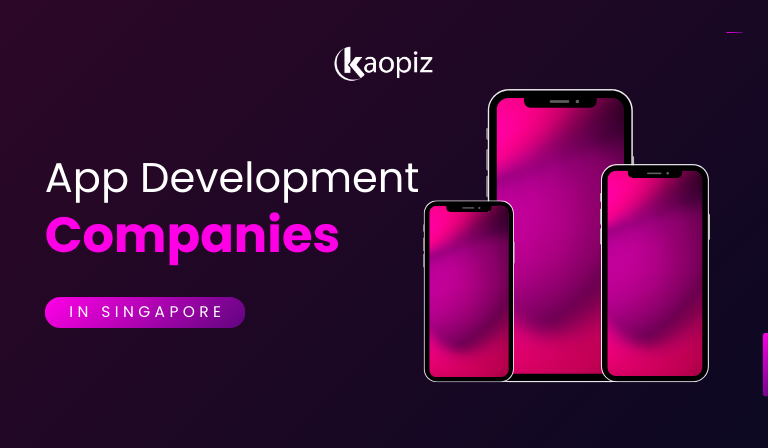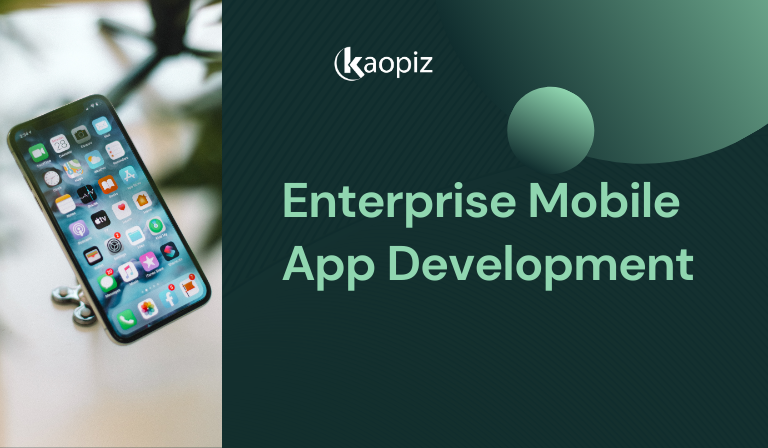Top 10 Software Development Trends in 2025 Business Should Know
The software development landscape is evolving faster than ever—and 2025 is set to bring even more transformative changes. For companies looking to stay competitive, understanding the latest software development trends isn’t optional—it’s essential.
In this blog, we’ll explore the top 10 software development trends in 2025 that forward-thinking businesses should keep an eye on. Whether you’re planning your next product launch or optimizing an existing platform, these insights will help you make informed decisions in an increasingly digital-first world.
Table of Contents
- Current State of the Software Industry
-
Top 10 Software Development Trends in 2025
- AI & Machine Learning Integration
- Low-Code/No-Code Development
- Cloud-Native and Serverless Architectures
- DevSecOps and Shift-Left Security
- Progressive Web Apps (PWAs) and Microservices
- Internet of Things (IoT) and Edge Computing
- Blockchain Beyond Crypto
- AR/VR and Immersive Tech
- Agile and Continuous Delivery Practices
- Outsourcing as a Strategic Lever
- Why Choose Kaopiz as Your Software Development Provider
- Conclusion
- FAQs
Current State of the Software Industry
The global software market trends are experiencing robust and sustained growth, fueled by digital transformation, enterprise modernization, and the rising demand for cloud-based solutions. According to Statista, the worldwide software market is projected to reach a total revenue of $740.89 billion in 2025.
Within this landscape, Enterprise Software is expected to be the dominant segment, with a projected market volume of $315.00 billion by 2025. Increased investments in ERP systems, CRM platforms, and cloud-native business applications largely drive this surge.
Looking ahead, the market will likely maintain a steady pace of expansion, growing at a CAGR of 4.87% from 2025 to 2029. By the end of this period, it is expected to reach a total market volume of $896.17 billion, underscoring the industry’s strong upward trajectory.
On a global scale, the United States continues to lead the software market, with a projected revenue of $379.29 billion in 2025 alone. This dominance is further reinforced by a thriving ecosystem of tech startups, continuous innovation in enterprise solutions, and leadership in cloud computing services. Moreover, the country’s strong infrastructure and investment in digital transformation initiatives contribute significantly to its market leadership.
Top 10 Software Development Trends in 2025
As the software industry continues its rapid growth, staying ahead of emerging technologies is more important than ever. Below are the top 10 software development trends in 2025 that businesses should watch to stay competitive, innovative, and future-ready.
AI & Machine Learning Integration
Artificial Intelligence (AI) and Machine Learning (ML) are no longer futuristic; they’re now the latest trends in software development. These tools power applications that recognize speech, detect images, make predictions, and automate complex tasks across a wide range of industries.
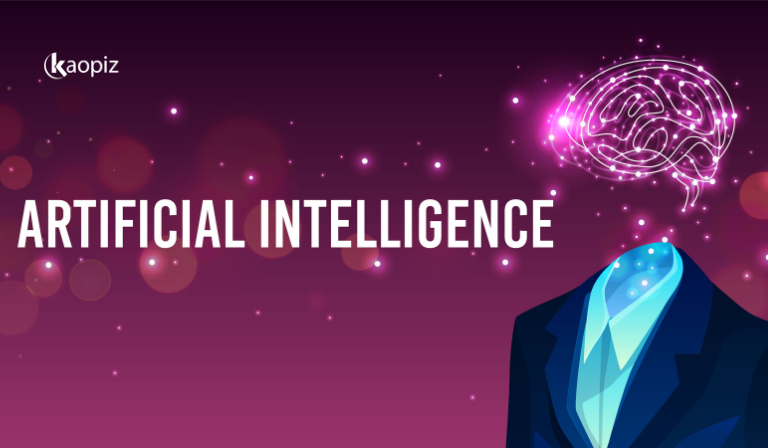
- In retail and healthcare, virtual assistants and chatbots are transforming customer engagement and support.
- In e-commerce, AI-powered analytics predict user behavior and personalize shopping experiences.
- In manufacturing, ML models monitor machine performance for predictive maintenance.
- In enterprise systems, AI helps detect anomalies, identify threats, and strengthen cybersecurity.
Statista projects that the global AI market will reach $243.72 billion in 2025 and may grow to $826.73 billion by 2030, with a CAGR of 27.67%. As a result, developers are using AI and ML integration to transform end-user experiences and change how they build software, automating repetitive coding tasks and focusing more on innovation.
Low-Code/No-Code Development
Low-code and no-code development platforms are transforming how developers and non-developers build software, making the process faster, more accessible, and more collaborative. These platforms empower business users and non-developers to create applications using visual drag-and-drop interfaces and pre-built components, dramatically reducing development time and the need for deep coding expertise.

Consequently, by abstracting complex coding tasks, these tools help bridge the IT talent gap and enable teams across departments to prototype and launch digital solutions without relying heavily on traditional development cycles.
According to research, 70% of new business processes will be built using low-code or no-code technologies by 2025. The global LCNC market is expected to reach $46.4 billion by 2026, growing at a 25% CAGR. Moreover, over 65% of non-IT workers will use LCNC platforms, and 80% will actively contribute to IT product creation, making it the most impactful software development trend.
Cloud-Native and Serverless Architectures
One of the most impactful software development industry trends in 2025 is the shift toward cloud-native and serverless architectures. As organizations strive for faster delivery, greater scalability, and operational efficiency, building applications specifically for the cloud has become a strategic priority.
Cloud-native development is based on four key principles:
- DevOps: Automate collaboration between development and operations.
- Continuous Delivery: Enables fast, reliable releases.
- Microservices: Build apps as independent, scalable services.
- Containers: Package apps for consistent and efficient deployment.
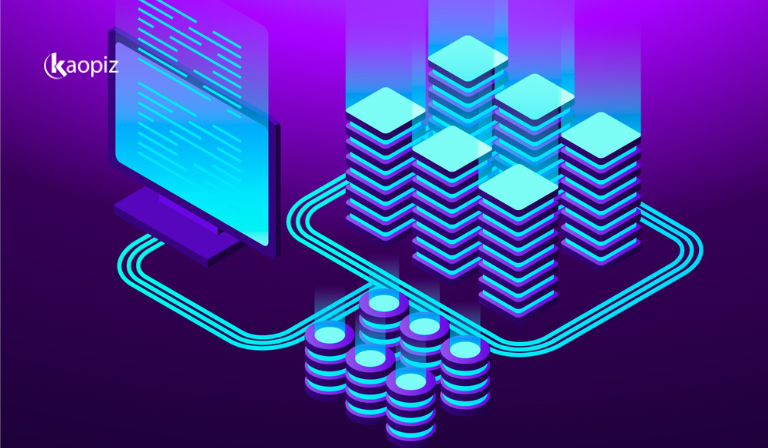
Serverless architecture takes cloud efficiency a step further by abstracting away infrastructure management entirely. Developers can deploy code in response to events using Function-as-a-Service (FaaS) platforms like AWS Lambda, Azure Functions, or Google Cloud Functions, without provisioning or managing servers.
According to market research, the serverless computing market is expected to grow at a CAGR of 22.7% from 2020 to 2025, driven by the need for flexible, cost-effective cloud solutions.
DevSecOps and Shift-Left Security
DevOps combines software development and IT operations to enable faster, more reliable software delivery. As of 2025, the global DevOps market is projected to reach $12.85 billion, reflecting the growing adoption of this methodology to streamline workflows and improve collaboration.
Building on DevOps, DevSecOps integrates security into every stage of the development lifecycle. Instead of treating security as a final step, it embeds testing, compliance, and vulnerability scans from the start.
This “shift-left” approach helps businesses catch and fix security issues earlier, reducing risks, minimizing costs, and accelerating time to market. In 2025, DevSecOps is a critical trend for companies aiming to build secure, scalable, and regulation-compliant software.
Progressive Web Apps (PWAs) and Microservices
PWAs are revolutionizing web development by blending the best of web and mobile experiences. Thanks to their fast performance and offline access, PWAs lead to measurable results. For instance, businesses report a 137% increase in user engagement and a 42.86% drop in bounce rates. As a result, PWAs are becoming an increasingly popular choice for companies aiming to enhance user experience and retention.

Built using modern web technologies like service workers, web app manifests, and responsive design, PWAs run directly in browsers without requiring app store downloads, helping companies reach wider audiences with lower friction.
On the backend, microservices architecture enables greater scalability and flexibility. Instead of a single monolithic system, apps are built as a collection of independent services that can be developed, deployed, and scaled individually. According to Market Research Future, the microservices architecture market is expected to grow from $7.7 billion in 2024 to $30.0 billion by 2032, with a CAGR of 18.5% over the forecast period.
Together, PWAs and microservices are the latest technology trends in IT, empowering businesses to build modern, responsive, and scalable software ecosystems in 2025.
Internet of Things (IoT) and Edge Computing
IoT is transforming how physical devices connect, communicate, and generate data across sectors like smart homes, healthcare, manufacturing, and transportation. Consequently, these applications require intelligent software for device management, real-time analytics, and automation. In particular, the ability to process and act on data in real time has become essential for maximizing efficiency and responsiveness.
By 2024, the IoT market is projected to exceed $1 trillion, with continuous revenue growth expected through 2030. Businesses are using IoT to enhance customer experiences, improve operational efficiency, and unlock new revenue streams.

As a result of the vast data generated by IoT devices, edge computing has become essential. Specifically, it processes data closer to the source, thereby reducing latency, improving performance, and minimizing bandwidth usage. According to Grand View Research, the global edge computing market is expected to grow at a CAGR of 36.9% from 2024 to 2030.
Edge computing also supports better data privacy and security by keeping sensitive data local. Together, IoT and edge computing are key computer software industry trends in 2025, enabling faster, smarter, and more secure software solutions.
Blockchain Beyond Crypto
Although people know blockchain primarily as the foundation of cryptocurrencies, software developers are increasingly using it in 2025 to ensure data integrity, transparency, and security across decentralized systems.
Businesses are increasingly using blockchain for:
- Supply chain management – enabling end-to-end traceability
- Identity verification – securing digital identities and reducing fraud
- Smart contracts – automating agreements without intermediaries
- Data sharing – ensuring tamper-proof records in sectors like healthcare and finance

Unlike traditional centralized databases, blockchain offers immutable, distributed ledgers that are resilient to data breaches and tampering. This makes it ideal for applications requiring trust, accountability, and auditability.
According to Statista, the global blockchain market is projected to reach $39.7 billion by 2025, reflecting a strong demand for decentralized solutions in software engineering trends.
AR/VR and Immersive Tech
Augmented Reality (AR) and Virtual Reality (VR) are transforming how users interact with digital content, offering immersive experiences that go far beyond entertainment. From virtual training and remote collaboration to product visualization and interactive education, these technologies are reshaping industries. According to Statista, the AR & VR revenue market worldwide is projected to reach $46.6 billion in 2025.

Key software development trends fueling this growth include:
- Improved hardware: Next-gen headsets and smartphones enable smoother, more realistic AR/VR experiences.
- Increased adoption: Businesses are using AR/VR to enhance training, customer engagement, and operational efficiency.
- Innovative use cases: Developers are building cutting-edge apps for virtual shopping, immersive learning, and simulation-based training.
As AR/VR becomes more mainstream, integrating immersive tech into software solutions is emerging as a key trend for businesses looking to stand out and engage users in new, meaningful ways.
Agile and Continuous Delivery Practices
Agile methodologies have significantly transformed software development by prioritizing iterative progress, customer collaboration, and flexibility over rigid planning. For example, frameworks like Scrum, Kanban, and Extreme Programming (XP) promote cross-functional teamwork, continuous feedback, and fast adaptation to change. As a result, development teams can respond more effectively to evolving requirements and deliver value more efficiently.
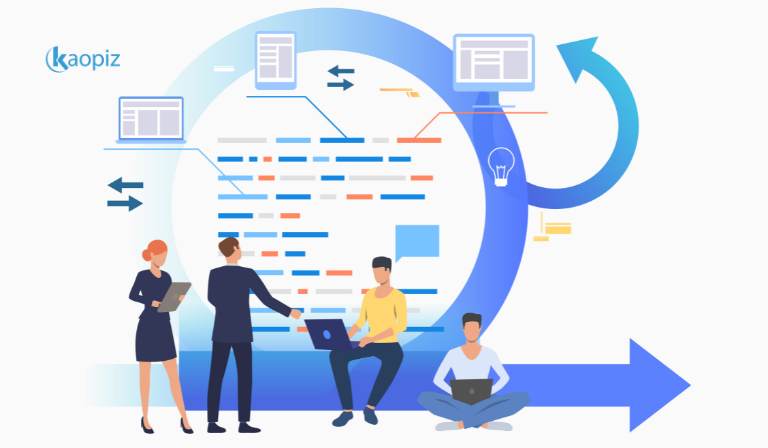
Organizations using agile report 64% improvement in project success rates and up to 60% growth in profit and revenue. Agile enables teams to work transparently, deliver value incrementally, and respond to evolving client needs.
Alongside agile, development teams have adopted continuous delivery (CD) as a critical practice—automating testing, builds, and deployments to ensure they can release software quickly and reliably. Together, agile and CD help businesses accelerate innovation, boost productivity, and maintain a competitive edge in 2025.
Outsourcing as a Strategic Lever
In 2025, software outsourcing is no longer just a cost-cutting tactic—it’s a strategic move for companies aiming to scale quickly, access global talent, and stay competitive. With the rising demand for faster innovation and specialized expertise, outsourcing offers flexibility and speed that in-house teams alone often can’t provide.

By partnering with experienced outsourcing providers, businesses can:
- Accelerate development timelines
- Fill talent gaps, especially in high-demand areas like AI, cloud, and cybersecurity
- Reduce operational costs while maintaining high quality
- Focus internal teams on core business priorities
Emerging tech hubs like Vietnam, India, and Eastern Europe are gaining attention for their skilled engineers, favorable pricing, and English proficiency. Outsourcing also supports around-the-clock development cycles, enabling faster product delivery and continuous support.
Why Choose Kaopiz as Your Software Development Provider
In current trends in software development, choosing the right partner is critical to staying ahead. At Kaopiz, we combine deep technical expertise with a client-first mindset to deliver scalable, innovative, and cost-effective software solutions.
- Proven Experience Across Industries: With 500+ successful projects for clients in Japan, Singapore, the U.S., and beyond, we understand the unique challenges across industries like fintech, e-commerce, manufacturing, and healthcare.
- Full-Cycle Software Development: From ideation and UI/UX design to development, testing, deployment, and ongoing maintenance, Kaopiz provides end-to-end services tailored to your business goals.
- Expertise in Cutting-Edge Technologies: Our engineers specialize in AI, cloud-native apps, IoT, blockchain, AR/VR, and low-code/no-code platforms, making us a reliable partner for companies embracing the latest software development trends in 2025.
- Agile, Scalable, and Global: With over 300 skilled professionals and a flexible engagement model, we scale with your needs while ensuring speed, transparency, and collaboration.
- Cost-Effective Nearshore Advantage: Headquartered in Vietnam, Kaopiz offers high-quality development at competitive rates, allowing you to innovate without compromising your budget.
Whether you’re building a new product, modernizing legacy systems, or extending your team, Kaopiz is the strategic software partner that delivers results on time, on budget, and beyond expectations.
Conclusion
As the software industry continues to evolve, staying informed about emerging trends is no longer optional—it’s a competitive necessity. From AI integration and cloud-native architectures to low-code platforms and immersive technologies, the custom software development trends of 2025 are reshaping how businesses innovate, scale, and deliver value.
Adopting these trends can lead to faster development cycles, better user experiences, and smarter, more secure applications. Whether you’re a startup or an enterprise, aligning your strategy with these advancements will help you remain agile and ready for the future.
Looking for a reliable technology partner to help you navigate what’s next? Kaopiz is here to bring your ideas to life with proven expertise and scalable software solutions tailored to your goals.
FAQs
How Do Businesses Stay Updated with Software Trends?
Businesses can stay current by following industry publications, attending tech conferences, subscribing to developer communities, and partnering with experienced software development firms like Kaopiz that stay ahead of the curve.
What Are the Risks of Not Adapting to New Software Development Trends?
Failing to adopt modern development practices can lead to slower delivery cycles, security vulnerabilities, poor user experiences, and falling behind competitors who are leveraging more efficient, innovative technologies.
Is Offshore Development Still Cost-effective in 2025?
Yes. Offshore development remains a highly cost-effective strategy in 2025, especially when working with trusted partners in regions like Vietnam. Offshore software development trends offer access to skilled talent, faster time-to-market, and significant cost savings without compromising quality.
Trending Post
